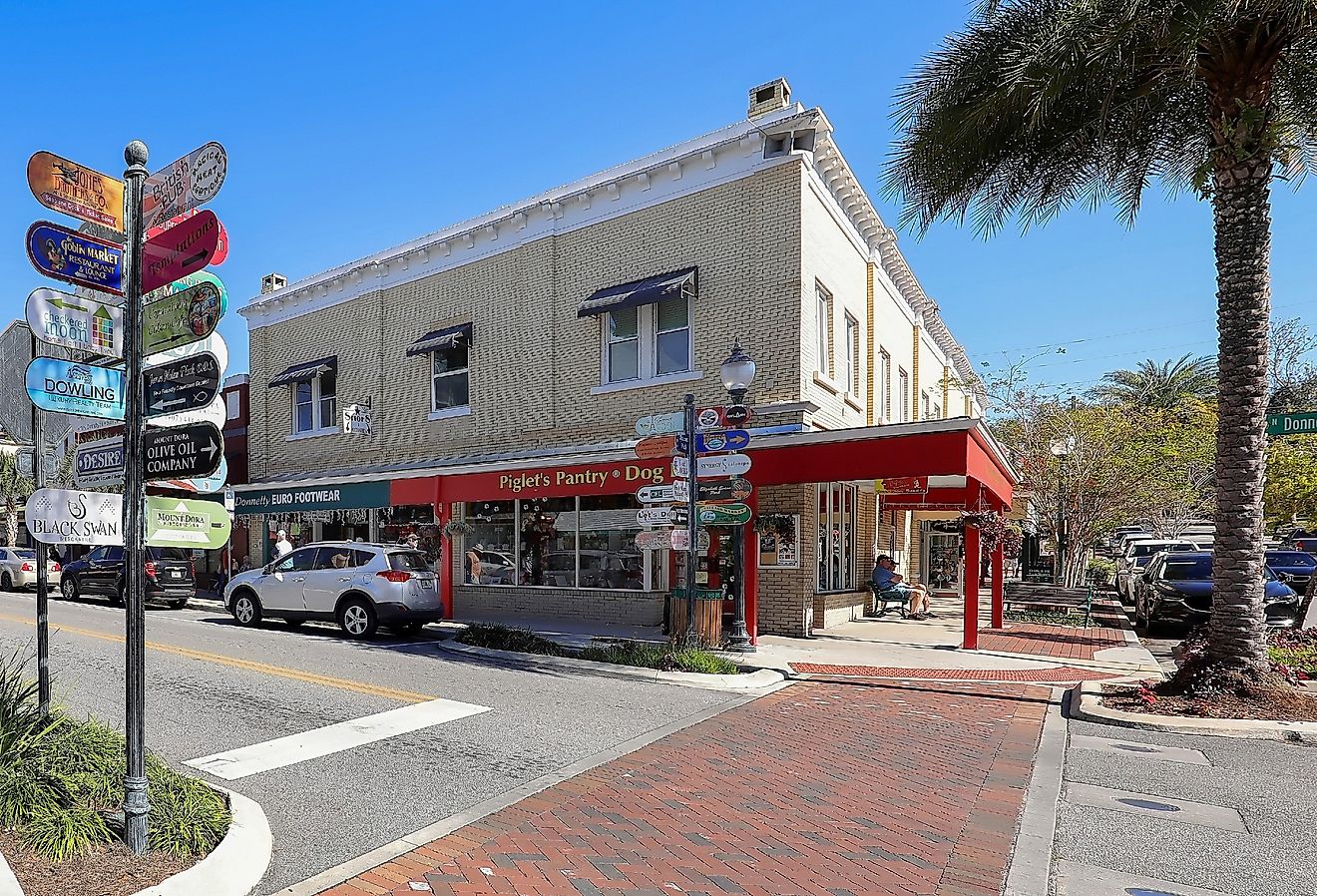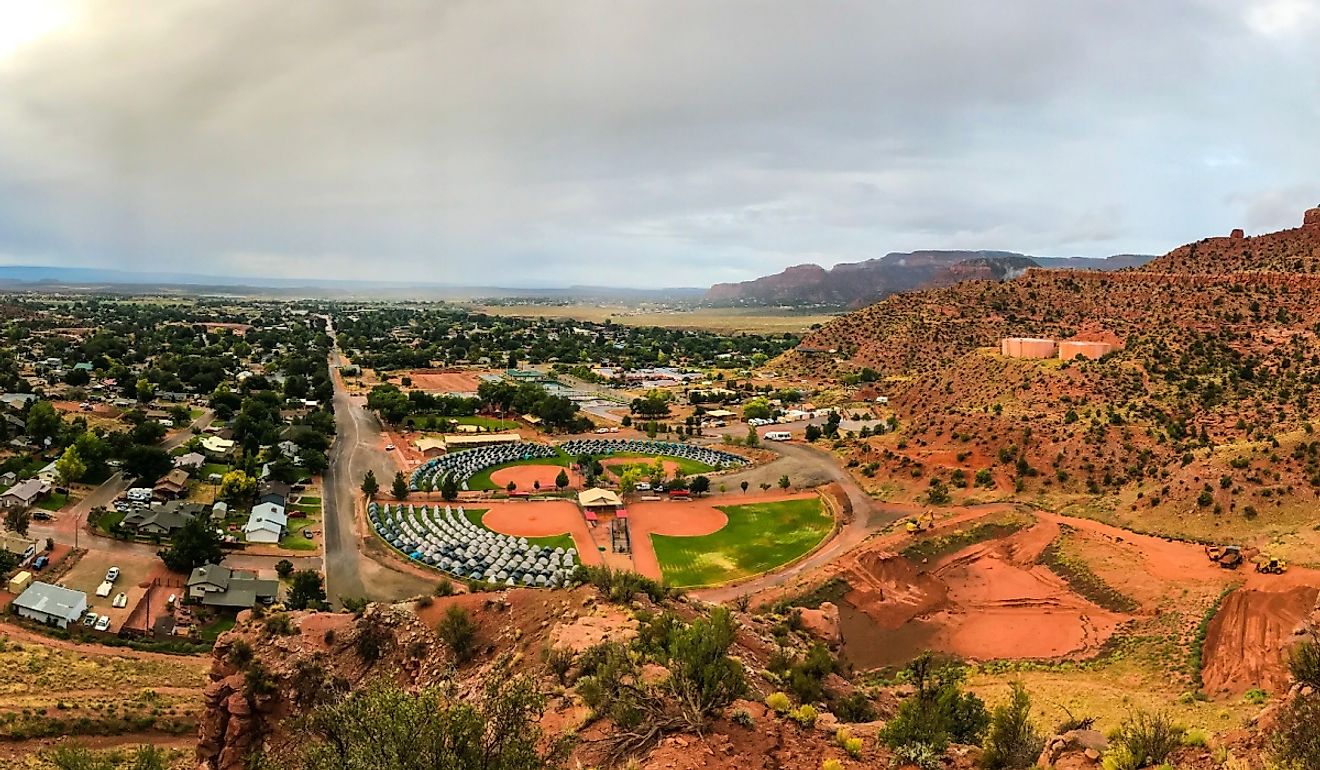
Shawnee, Kansas
Shawnee, Kansas, was named after the Shawnee Indians, who were originally from Ohio and Oklahoma. At the height of the Indian Removal of 1830, the Eastern Shawnee Tribe relocated to Kansas from Oklahoma and established Gum Springs in 1831. This saw the creation of the Shawnee Indian Manual Labor Boarding School with the help of the US government. Further, the Shawnee People fought alongside the Union in the American Civil War. But, when the Shawnee People returned home, their land was taken away and granted to settlers. Facing eviction, the Shawnee Indians struck a deal with the nearby Cherokee Indians to take in any members.
However, the town of Shawnee would face demolition at the hands of the confederate bushwhackers led by William Quantrill. In present-day Shawnee, there are clues about its past displayed throughout the city. Visitors can see these at Pioneer Crossing Park and the Shawnee Indian Mission Historic Site.

Geography Of Shawnee
Shawnee is located in the northeastern portion of Kansas. On a map, Shawnee can be found to the west of Overland Park, southwest of Kansas City, and north of Lenexa. Kansas State is one of 12 states that make up the American Midwest.
Shawnee is found in a physiographic area known as the glaciated region. As such, the Laurentide Ice Sheet melted and eroded the surface of the land. More so, it left behind limestone deposits. Another feature is loess which are hills or bluffs formed from loosely packed sediment such as silt, gravel, and limestone. Furthermore, the Kansas River makes up the north and western border of Shawnee.
Climate Of Shawnee
According to the Köppen Climate Standard, Shawnee falls under a humid subtropical climate. Over a year, Shawnee collects precipitation for 92 days, whereas the US average is 106.2 from rain, hail, and snow. Rainfall totals amount to 1033.78 mm, and snowfall totals equate to 388.62 mm. The warmest month of the year is July, with an average high of 32 °C, and the coldest month is January, with an average low of -9.3 °C. Cities with the same climate include Zhu Cheng City, China (10,900 km away) and Gwangju, South Korea (10,700 km).
History Of Shawnee
Shawnee was formerly known as Gum Springs when the Shawnee Indians inhabited it. In the 19th century, it served as a thoroughfare between Fort Leavenworth to Fort Riley as a government road. The Santa Fe Trail that ran from Kansas City, Missouri, to Olathe and further westward saw settlers pass through would-be Shawnee. In 1843, the first jail in Kansas opened in Gum Springs, and in 1855 it was the county seat of Johnson before being replaced in 1858 by Olathe, Kansas.
After Kansas became the 34th state in 1861, tensions between the anti-slave Union and pro-slave Confederate sides saw a conflict known as the American Civil War. William Quantrill, a known and feared Confederate leader, and his bushwhacker confederate soldiers sacked and burned Shawnee to the ground in October 1862. However, Shawnee would be raided a second time by the Confederate army in 1863 ahead of the Lawrence Massacre. This was due to Shawnee's proximity to Lawrence, being 55 kilometers from Lawrence. Furthermore, Shawnee served as a practiced site for the army headed by William Quantrill to train on how to sack and pillage a town. The city of Shawnee would be incorporated in 1922.
Demographics Of Shawnee
Shawnee is found in Johnson County, Kansas, and has a population of 64,429 inhabitants. Covering an area of 42 square miles, Shawnee has a population density of 1558.8 people per square mile. Shawnee is the 7th largest city in the state of Kansas, with Lawrence and Topeka ahead of it. The median household income is $108,089, and the gross monthly rent is $1,008. The average age of a resident is 38.4 years old. On the cost of living index, Shawnee rates at 105.3, whereas the state of Kansas rates at 83.1. With 100 being the national average, the primary concern is the cost of housing, which rates at 115.5. Yet, 7.35% of the population lives below the poverty line.
Economy Of Shawnee
The unemployment rate is 4.8%, whereas the US unemployment rate is 6.0%. The top industries that make up the economy of Shawnee include healthcare and social assistance at 13% overall, educational services at 12.2.%, and retail trade at 12.2.%.
Attractions In Shawnee
Shawnee Mission Park
Shawnee Mission Park offers 670 hectares of green space. At its center is the 49 hectares of the Shawnee Mission Park Lake with a marina and fish cleaning station and is a part of a trout restocking program. Shawnee Mission Park is a family-friendly destination that offers swimming, disc golf, a dog park, a fire circle, a playground, mountain biking, and hiking. There are 11 shelters that can be booked ahead of time, as well as a campground.
Shawnee Town 1929
The first jail, which was erected in Shawnee, sold for $1 to the City of Shawnee. It was moved to Blue Jacket Park, where it was transformed into a museum. The decade of the 1920s was selected for the museum for the boom that was occurring in Shawnee at the time. Prohibition, jazz, and the great depression are all highlighted for their social and local impact. There is one exhibit dedicated to the truck farmers of the 1920s, who were the backbone of the early agricultural economy. Through donations of funeral artifacts, there is an undertaker's exhibit that showcases the profession from the late 19th century to today. Available are 45-minute guided tours that detail all exhibits and significance in local history.
Shawnee Indian Mission Historic Site
The Shawnee Indian Mission Historic Site opened its doors in 1839 and ran until 1862. It served as one of the first boarding schools after the Louisiana Purchase. Land and funding came from the Shawnee tribe, with children attending from tribes outside the Shawnee reserve. The school operated in agreement with the US government, however, it received backlash over its Methodist teachings and administration, and the contract ended. The building serves as a National Historic Landmark, and the Kansas Historical Society maintains the site.











